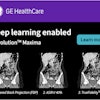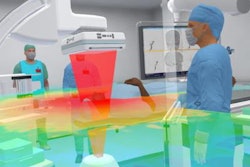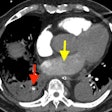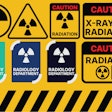
New research from Australia has shown that most junior medical officers (JMOs) have a poor understanding and knowledge of contrast phases in CT imaging, and this may have a serious impact on the quality of their scan requests.
"The majority of respondents to our survey indicated that they had formal radiology teaching during medical school; however, it appears evident that there has been limited teaching around contrast phases," noted Dr. Aiyapa Ajjikuttira, Prof. Alan Coulthard, and colleagues from the Department of Medical Imaging, Royal Brisbane and Women's Hospital, Queensland Health.
There is significant interest among JMOs in formal teaching sessions about contrast phases, and they could be delivered either at the time of annual orientation or as part of structured weekly teaching lessons, they reported at the annual scientific meeting (ASM) of the Royal Australian and New Zealand College of Radiologists (RANZCR), held recently in Brisbane.
Referrals by junior clinicians
Often the task of referring patients for an imaging exam falls on junior clinicians, who have historically viewed radiology-related education in medical school as inadequate. They can lack understanding of contrast enhancement in CT and the associated contrast phases that can be employed in imaging studies, yet tissue appearance in a contrast-enhanced study depends on the timing of image acquisition in relation to contrast administration, Ajjikuttira and Coulthard explained.
The team surveyed JMOs ranging from postgraduate year (PGY) 1 to 3+ to assess their understanding of contrast phases. The group invited 275 JMOs at their hospital to participate in an anonymous online survey. Participation was voluntary. The survey consisted of 14 questions covering four key areas of interest comprising participant demographics, previous radiology-related teaching, current understanding of contrast phases, and perceived usefulness of teaching sessions addressing contrast phases.
A total of 47 complete responses were received (23 PGY1, 15 PGY2, 9 PGY 3+). Of the respondents, 39 (89%) had formal radiology-related teaching sessions in medical school, of whom 33 (85%) had CT-related teaching. Eight participants (17%) had no formal radiology-related teaching.
Overall, 20 of the 47 participants (43%) indicated awareness of noncontrast, arterial, portal venous, and delayed phases, and 18 participants (38%) felt they were "somewhat prepared" at the commencement of clinical duties to refer patients for CT investigations. Conversely, 17 out of 47 participants (36%) felt they were "somewhat unprepared."
Of the 47 respondents, 17 (36%) rated their understanding of contrast phases as "fair," while 24 (51%) rated their understanding of contrast phases as "poor." 37 participants (79%) felt formal teaching sessions covering contrast phases would be "extremely useful."
All participants indicated a willingness to attend formal teaching sessions about contrast phases, according to the authors.
What do junior doctors need to know?
Commenting on the survey, Dr. Catherine Mandel, an MRI radiologist at Swinburne University of Technology in Melbourne, told AuntMinnieEurope.com that the main issue here is that referrers must be sufficiently well informed to be able to provide radiologists with the necessary information to both justify the test and its associated risks and for the radiologist to protocol it to answer the clinical question.
"Whilst referring junior doctors might not know much about phases, the real question is: how much do they need to know?" she said. "The more important thing is that the doctor writing the referral provides good clinical information so that we, the experts, can do the right type of CT, and then our reports should contain enough information to explain the findings."
It is essential that junior doctors know about contraindications, such as allergies to contrast media and renal impairment, added Mandel, who is also a radiologist at Lake Imaging and director of radiology for WA Country Health Service. It is always interesting to know what junior doctors understand about how radiologists perform CT scans, she noted.
Editor's note: You can view the whole poster on the EPOS section for the RANZCR ASM 2023 on the ESR's website.




















